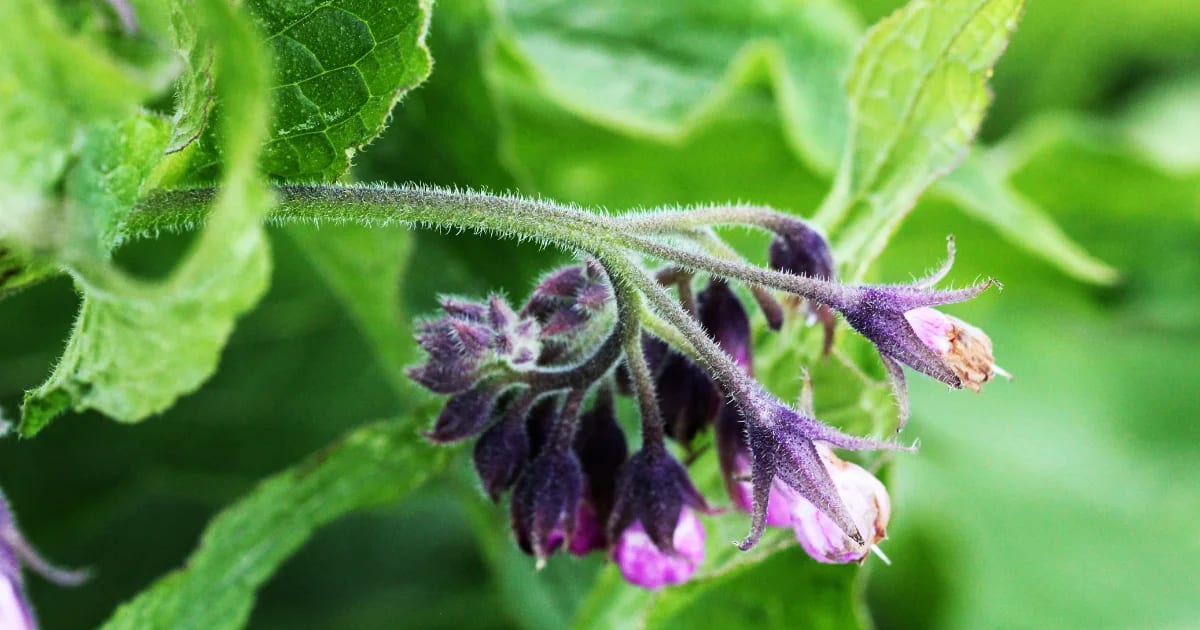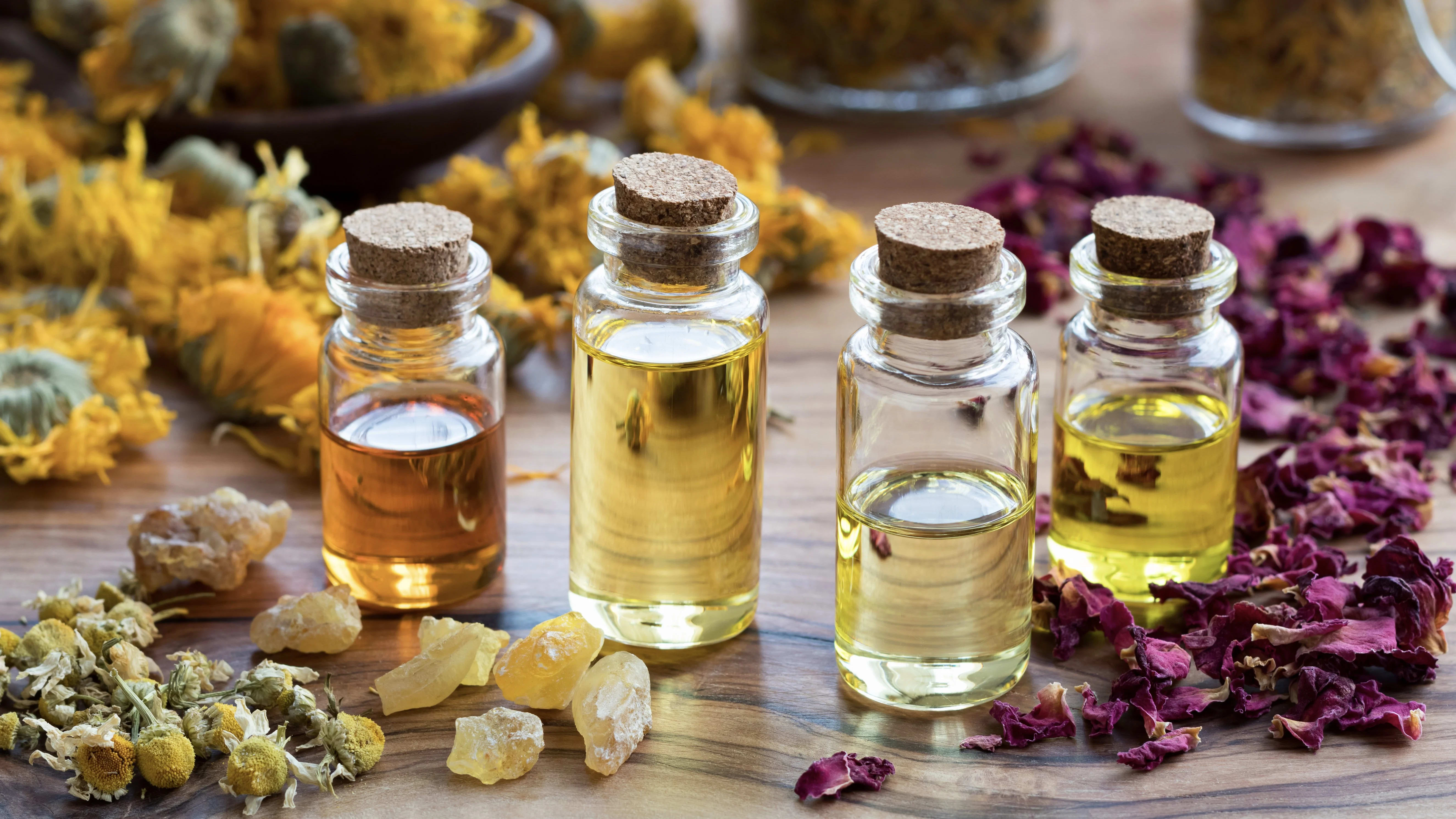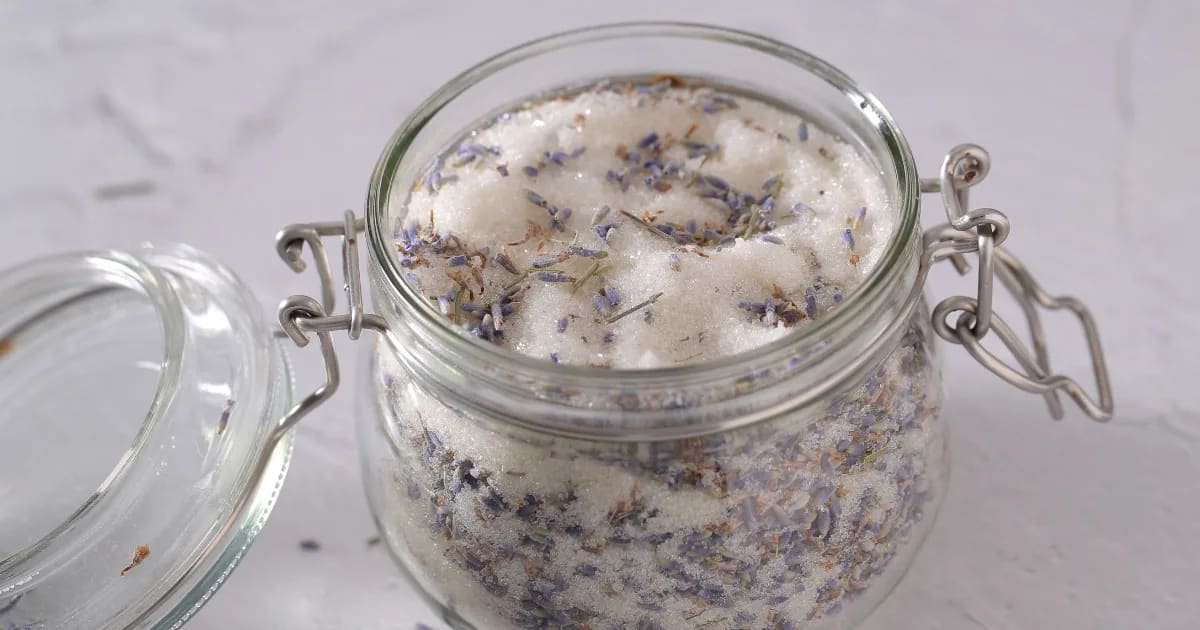Comfrey Hydrosol: Benefits and Uses of a Healer

Starting the New Year on the Wrong Foot
Ideally, I hoped to welcome the New Year with a sense of peace and joy, embracing the blessings and beauty that surround me. However, this year started off unexpectedly. On New Year’s Eve day, while enjoying a hike with my two-year-old grandson, a small mishap occurred. I tripped over a pinecone and inadvertently stepped into a hole, resulting in a twisted ankle and several broken bones in my foot. Thankfully, I was able to call for assistance. My husband and a reliable friend supported me in navigating back from the trail. I was fortunate to find that my injuries were straightforward, requiring me to wear a boot and avoid putting weight on my foot.
I spent the next few days resting and feeling very sore. While medication was necessary to deal with the worst of the pain, I also leaned heavily on my essential oils—and on Comfrey hydrosol.
In this post, we’ll explore what a hydrosol is, and why Comfrey hydrosol is a time-honored natural remedy for joints, tendons, and bones. You’ll discover why it’s called “knitbone,” and we will have a look at several research studies that validate comfrey’s thousands of years of use as a pain-reliever and healer.
When I experienced the relief that Comfrey hydrosol brought to my injured foot, I understood why ancient Greek and Roman doctors relied on it on the battlefield, and grasped why comfrey has earned the steadfast trust of generations of healers. Let’s explore the manifold reasons why “knitbone” has an esteemed place in natural medicine cabinets.
First, Let’s Explain Hydrosols
A hydrosol is the aromatic water that is produced during the distillation of plant material.
To use Lavender (Lavandula angustifolia) as an example, during distillation the plant material is exposed to hot water or steam which extracts components from the plants. The steam from this process is collected and cooled, resulting in a flask water with essential oil floating on the top.
The essential oil contains lavender’s lipophilic (oil-loving) components, and the water contains the plant’s hydrophilic (water-based) components. This water is the hydrosol.
Because hydrosols are water-based, they contain only miniscule amounts of essential oil and are much gentler than essential oils. Hydrosols also have their own unique properties that are different from essential oils. Learn more about hydrosols on my blog here.
Get to Know Comfrey
Comfrey (Symphytum officinale) is a hardy, lush green perennial herb that grows broad flat leaves on fuzzy stems. It will reach two to three feet tall and produces stalks of tiny bell-shaped purple or blue flowers. The entire plant can be used for healing, but the leaves are most commonly chosen for therapeutic applications. Comfrey is a vigorous plant that grows quickly, generously providing several harvests of leaves during the growing season.
Part of Comfrey’s healing magic is that it contains “allantoin,” which promotes skin cell regeneration, and rosmarinic acid, which helps relieve pain. It’s also rich in “mucilage,” a gelatin-like substance that can soothe the skin and mucous membranes, cool inflammation, and support the healing of burns and wounds.
Researchers reviewing existing studies on Comfrey found overwhelming evidence that the plant is useful “for the topical treatment of pain, inflammation and swelling of muscles and joints in degenerative arthritis, acute myalgia in the back, sprains, contusions and strains after sports injuries and accidents.”
Using Comfrey Therapeutically
Think of Comfrey as a plant that gently but powerfully binds things back together. It’s a rebuilder, a soother, and a strengthener.
Comfrey doesn’t produce essential oil, but its hydrosol is an absolute gem. I used it when I was immobile to make compresses, which I gently laid over my broken foot, and I also spritzed it directly onto my skin to help relieve pain and bruising.
Try it for:
Bone and joint pain: A 2011 study found that comfrey performed better than placebo at “relieving pain and stiffness . . . in those with primary osteoarthritis of the knee.” In another study, Comfrey helped patients reduce their reliance on NSAIDS and other pain relieving drugs. And I can personally attest to the benefits of “knitbone” for broken bones!
Skin care and small wounds: Thanks to allantoin, Comfrey is a powerful healer. A 2015 study found that it “may have a great application in the treatment of skin irritation.” This is not surprising, since allantoin supports skin cell growth and collagen production. I reach for comfrey hydrosol as a trustworthy treatment for skin irritation, burns, acne, bug bites, and even small scrapes and cuts.
Emotional healing: Comfrey sounds similar to comfort, and this plant is an emotional balm as well as a physical one. When we’ve been emotionally wounded, Comfrey brings reassurance and helps re-knit the broken parts of our spirits together.
Safety Considerations
Comfrey is traditionally applied topically as a compress.
If you’re familiar with hydrosols, you know that many of them can be drunk for their therapeutic benefits. Some are quite tasty, like Peppermint (Mentha × piperita) and Blood Orange (Citrus sinensis). However, I don’t recommend taking Comfrey hydrosol internally, because it may contain a type of alkaloid that can lead to liver toxicity. For this same reason, Comfrey hydrosol is also not recommended for use during pregnancy.
When using Comfrey hydrosol to care for wounds, be sure to wash the wound thoroughly with soap and water first. Comfrey is such a potent healer that it shouldn’t be used for deep wounds, since it might cause the upper layers of skin to heal faster than the deeper part of the injury, creating a pocket where infection could fester.
My Takeaway
Comfrey hydrosol brings centuries-old wisdom to modern healing. As I leaned into “knitbone’s” comforting embrace during my time of immobility, I felt supported by generations of natural healers who understood its power. Comfrey is revered for its restorative properties, and its hydrosol offers us its generous, vibrant spirit and amazing regenerative actions to help us through challenging periods of physical and emotional healing.
References
Araújo, L. U., Reis, P. G., Barbosa, L. C., Saúde-Guimarães, D. A., Grabe-Guimarães, A., Mosqueira, V. C., Carneiro, C. M., & Silva-Barcellos, N. M. (2012). In vivo wound healing effects of Symphytum officinale L. leaves extract in different topical formulations. Die Pharmazie, 67(4), 355–360.
D'Anchise, R., Bulitta, M., & Giannetti, B. (2007). Comfrey extract ointment in comparison to diclofenac gel in the treatment of acute unilateral ankle sprains (distortions). Arzneimittel-Forschung, 57(11), 712–716. https://doi.org/10.1055/s-0031-1296672
Koll, R., & Klingenburg, S. (2002). Therapeutische Eigenschaften und Verträglichkeit topischer Beinwellzubereitungen. Ergebnisse einer Beobachtungsstudie an Patienten [Therapeutic characteristance and tolerance of topical comfrey preparations. Results of an observational study of patients]. Fortschritte der Medizin. Originalien, 120(1), 1–9.
Morton J. F. (1990). Mucilaginous plants and their uses in medicine. Journal of ethnopharmacology, 29(3), 245–266. https://doi.org/10.1016/0378-8741(90)90036-s
Mount Sinai. Comfrey. MountSinai.org. https://www.mountsinai.org/health-library/herb/comfrey
Smith, D. B., & Jacobson, B. H. (2011). Effect of a blend of comfrey root extract (Symphytum officinale L.) and tannic acid creams in the treatment of osteoarthritis of the knee: randomized, placebo-controlled, double-blind, multiclinical trials. Journal of chiropractic medicine, 10(3), 147–156. https://doi.org/10.1016/j.jcm.2011.01.003
Staiger C. (2012). Comfrey: a clinical overview. Phytotherapy research : PTR, 26(10), 1441–1448. https://doi.org/10.1002/ptr.4612





